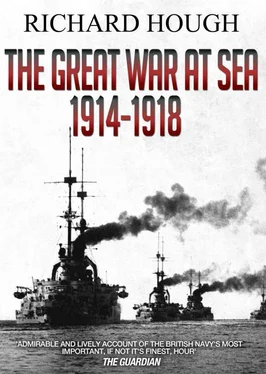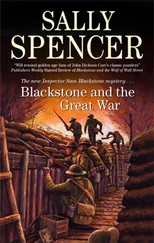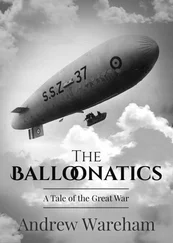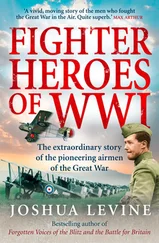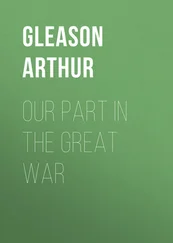All these new fears for the security of the battleship appeared to be confirmed in the Russo-Japanese War of 1904-5. Japanese torpedo boats opened hostilities by attacking the Russian Fleet. The Japanese suffered critical battleship losses from mines. Both sides became increasingly preoccupied with the new underwater weapons.
Other lessons one learned in this naval war which crystallized all the problems argued over by theoreticians for years. ‘Spotting’ the fall of shot accurately from ships firing mixed armament was seen to be almost impossible, the varying size splashes only confusing the spotter. According to the official British observer with the Japanese Fleet at the first-ever battle of ironclads, ‘when 12-inch guns are firing, shots from 10-inch pass unnoticed, while for all the respect they instil, 8-inch or 6-inch guns might just as well be peashooters’. To the astonishment of this same observer (and to the whole naval world when it was informed) the Russian battleships opened accurate fire at 18,000 yards: 3,000 yards was still the standard range of British battle practice at this time. It was clear that heavy guns could prove decisive long before medium-calibre guns could come into effective range.
Here was proof for far-sighted naval designers that only the heaviest guns would count in naval warfare, and that future battles would be fought at ranges of between five and ten miles (as visibility permitted) with flotillas of torpedo boats attempting to get within range of the enemy in order to launch their ‘tin fish’. Clearly, then, only the heaviest and anti-torpedo boat guns must in future be mounted in battleships.
The Japanese and Russians were, naturally, the first to recognize the lessons of the battles they fought. The United States Navy Board drew up plans for two battleships mounting ten 12-inch guns before the end of 1904, and succeeded in getting authority through Congress to lay down only marginally smaller all-big-gun battleships early in 1905. In Italy the naval architect Vittorio Cuniberti had made public his design for a battleship mounting twelve 12-inch guns, and none smaller except anti-torpedo boat guns.
The American ships were built at a leisurely pace, the Italians had not got the money to follow Cuniberti, the Japanese had not sufficiently developed their ordnance facilities and eventually produced a hybrid with mixed 12-inch and 10-inch guns. Only Britain had the facilities and need to produce an all-big-gun battleship without delay and set a pace which no other nation could match. Within a few days of his appointment as First Sea Lord, Fisher set up a Committee on Designs. It included a number of the best ‘brains’ in the Navy, all imbued with Fisher’s sense of urgency. Less than a year later, the Dreadnought was laid down at Portsmouth, and eight months after her launch was steaming on her trials.
The effect at home and abroad was all that Fisher had hoped for. The Dreadnought , with ten 12-inch guns, had a broadside of twice as many heavy guns as any ship afloat. When few battleships could make 18 knots, the Dreadnought’s turbines speeded her along at 21 knots, and of even greater significance, she crossed the Atlantic at over 17 knots average without a breakdown. The German naval authorities were stunned by the superiority and speed of construction of this ship, and temporarily halted construction on battleships that would now be obsolete on completion. In the competition – the ‘battleship race’ – which was rapidly increasing in scale and intensity, the first round between Britain and Germany, between Fisher and von Tirpitz, had been won by the Royal Navy.
At home there was great satisfaction and rejoicing. Models of the Dreadnought appeared in the shops, boys could recite every detail of her statistics, and wherever she could be seen crowds collected. But among navalists, and Fisher’s detractors, there was vocal criticism of the battleship. Her cost of construction was high and the cost of her loss in battle would be commensurately high. There were those who favoured smaller battleships with 10-inch guns, which could be built in greater numbers. Above all, if she made every battleship in the world obsolete, as Fisher loudly claimed, then Britain’s great superiority in numbers over Germany was wiped out at a stroke.
Fisher fought back at what he regarded as counsels of doom and timidity, claiming that Britain could outbuild Germany and would have a dreadnought battle squadron before Germany could complete her first Dreadnoughtschiff In all the arguments that raged to and fro on the platforms, in the Press and West End clubs, the one undeniable and supremely important fact appears never to have been mentioned: the all-big-gun ship was as certain to come as day follows night, was already on the design boards of many foreign admiralties, was already under construction in the United States.
What Britain had done under the ‘ruthless, relentless and remorseless’ (as he liked to claim for himself) methods of Fisher was to produce a world-beater overnight. The Dreadnought reasserted once again British paramountcy at sea, and in a style of theatricality which only Jacky Fisher could sponsor.
THE ANGLO-GERMAN BATTLESHIP RACE
Admiral Fisher’s attributes – The dreadnought race begins – Admiral Beresford’s vendetta against Fisher – The German Emperor’s intransigence – The dreadnought battle - cruiser – The ‘ We want eight and we won’t wait’ campaign and Winston Churchill’s opposition – The Prime Minister’s committee to enquire into the conduct of naval affairs – Fisher’s resignation
Admiral Fisher led the Royal Navy as First Sea Lord for five of the most critical peacetime years in the service’s history, working with a white hot intensity that sharpened his beliefs and prejudices, made him more bellicose than ever, and illuminated more brightly year by year the colourful characteristics that had made him the greatest naval administrator since Lord Barham.’ (1)He became towards the end of his term of office a self-drawn caricature of the Admiral who had stormed into the Admiralty on Trafalgar Day 1904, the double underlinings in his cryptic Inters and quotations from the Bible more numerous, his exclamations and imprecations more extreme, his response to opposition ever more violent. Power, rather than Acton’s tendency to corruption, had always brought out the actor in Fisher. Sustained and supreme power turned the public figure of the man into a sort of naval Henry Irving bestriding the stage with exaggerated postures. But his effectiveness remained as sharp as ever, and it was not until his years in office were over that the toll they had exacted from himself and from others became fully apparent.
Fisher was not a man of war. He hated war. He had seen it at first hand out in China as a young man and had barely escaped with his life. ‘War is hell!’ he repeatedly declared. But if it came his beloved Navy would be ready. Then half measures would be dangerous and futile. As an inappropriate choice of delegate to the first Hague Peace Convention (1899) which was intended to bring about a reduction in armaments and laws for reducing the awfulness of war, Fisher had shocked the assembly by exclaiming, ‘You might as well talk of humanizing Hell!’ ‘War is the essence of violence’, was one of Fisher’s oft-repeated aphorisms. ‘Moderation in war is imbecility. HIT FIRST. HIT HARD. KEEP ON HITTING!’
Whatever this Hague Peace Conference may have accomplished, and Fisher regarded it as a waste of time, the second in June 1907 was accepted by everyone as a failure. For political and economic reasons alone, Britain was anxious to bring about a reduction in naval armaments and put a brake on the battleship race which had been accelerated by the construction of the Dreadnought . A proposal to bring this about was answered by Tirpitz: ‘…look at the facts. Here is England, already more than four times as strong as Germany, in alliance with Japan, and probably so with France, and you, the colossus, come and ask Germany, the pigmy, to disarm. From the point of view of the public it is laughable and Machiavellian, and we shall never agree to anything of the sort.’ (2)
Читать дальше
